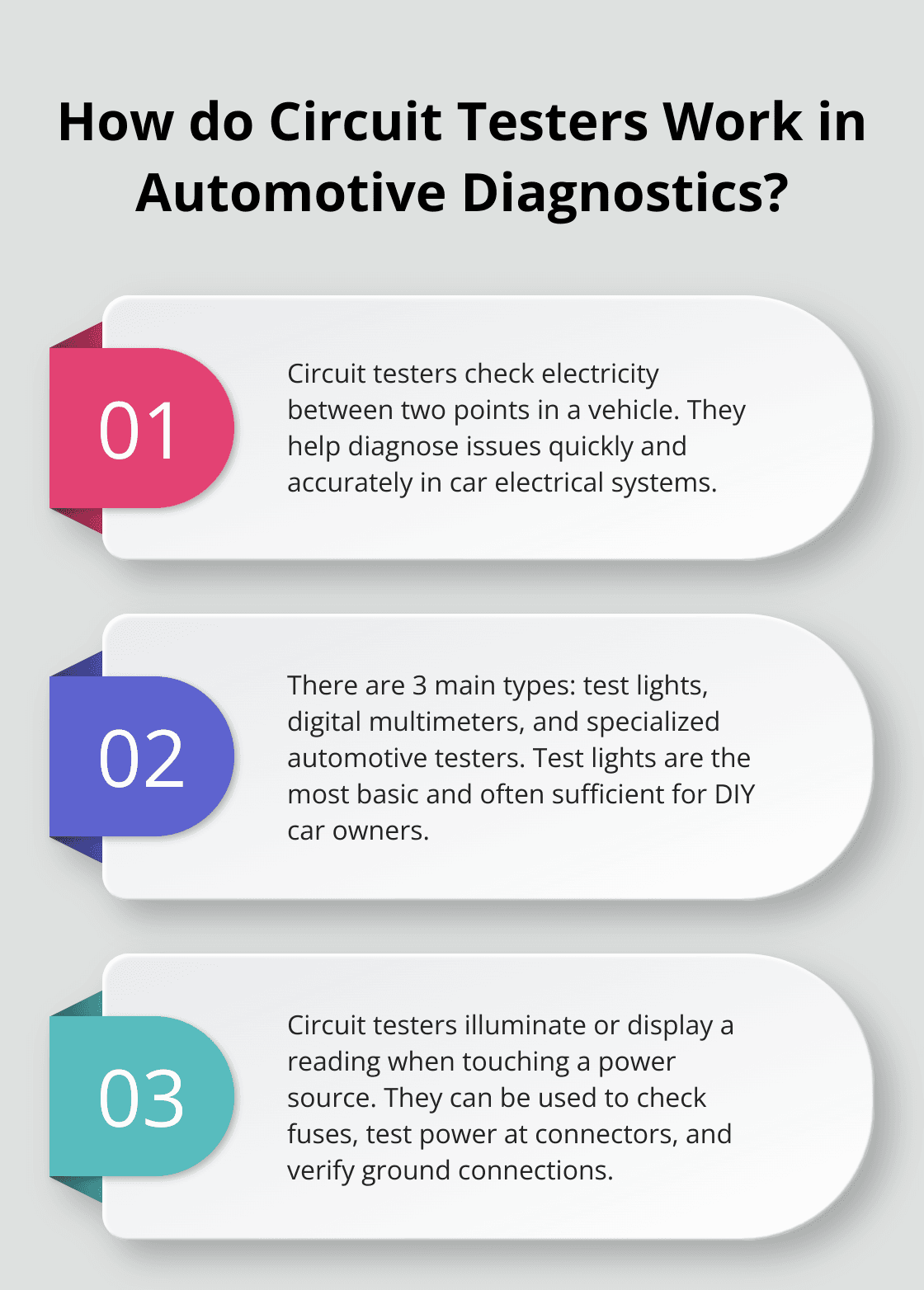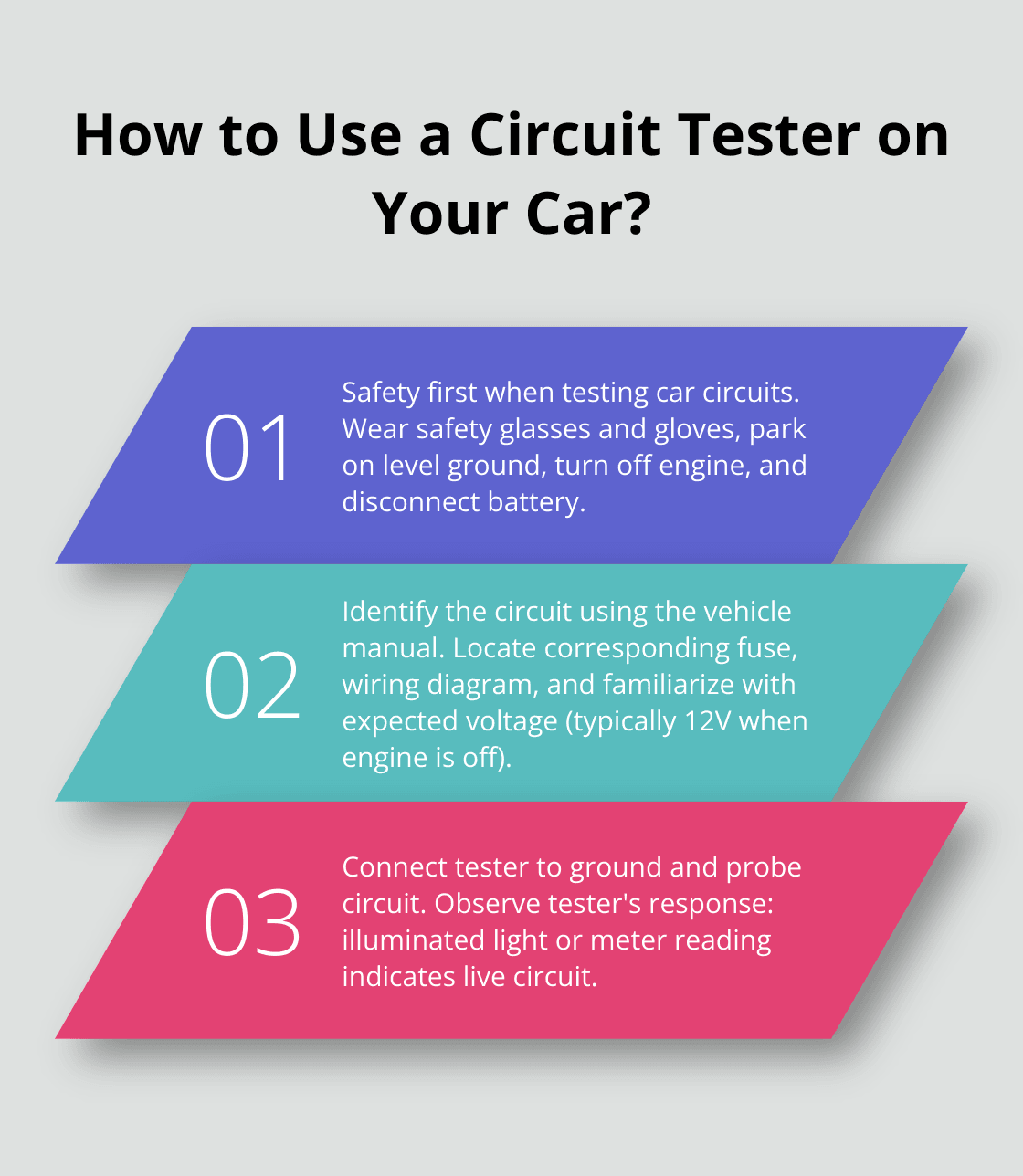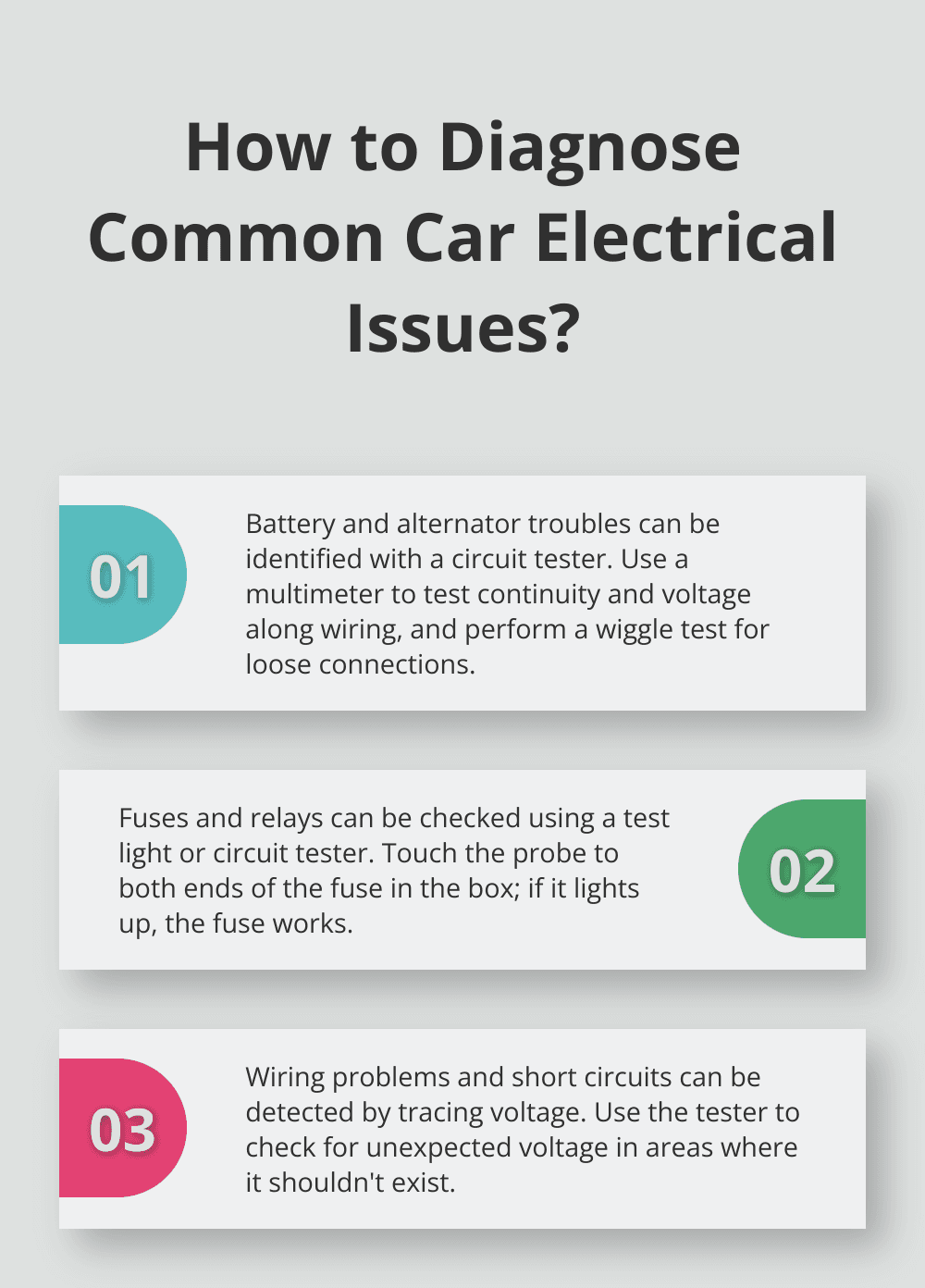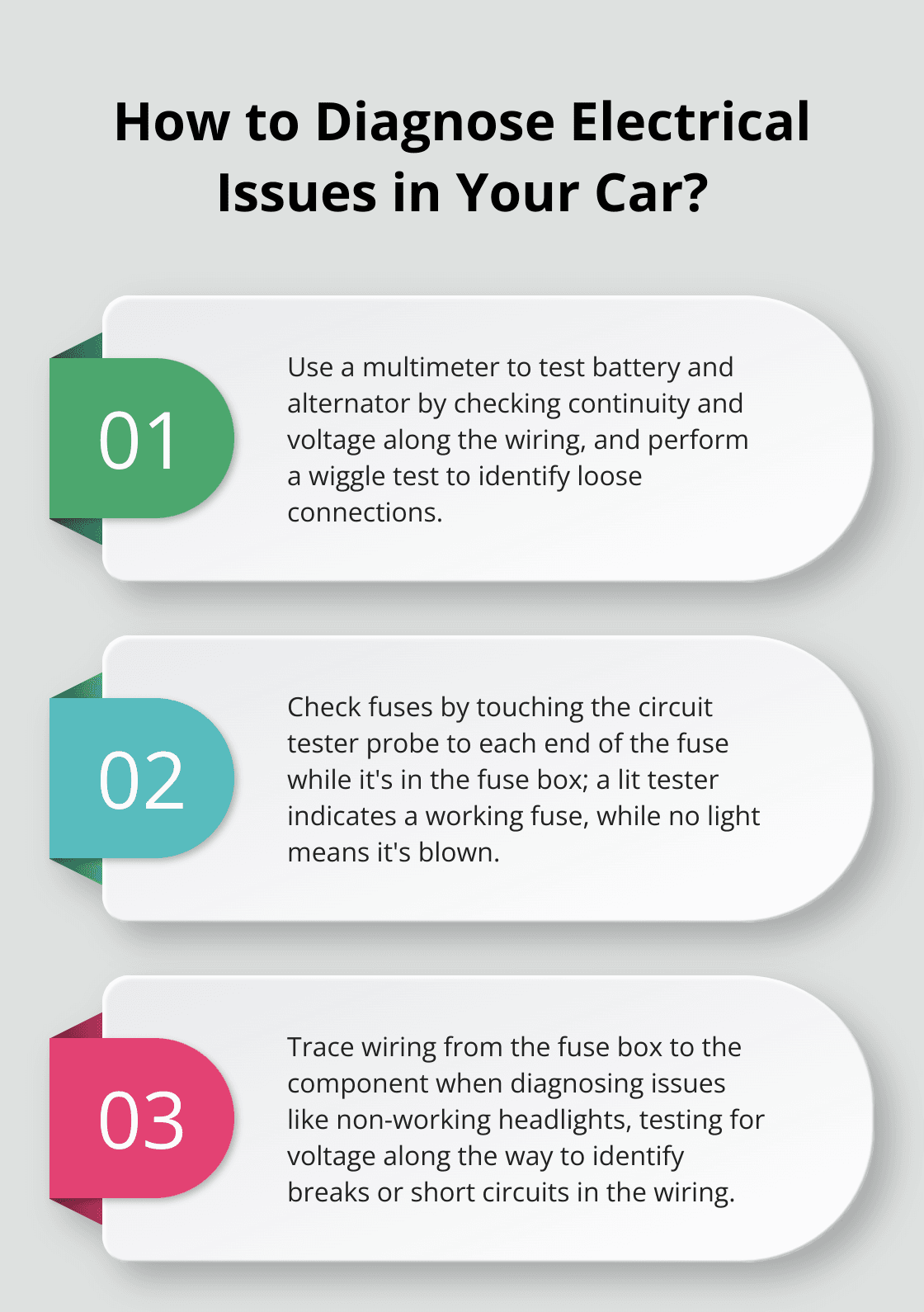At Dallian Auto Accessories, we know that a car electric circuit tester is an essential tool for diagnosing electrical issues in vehicles.
This handy device can save you time, money, and frustration by pinpointing problems quickly and accurately.
In this guide, we’ll show you how to use a circuit tester on your car, step by step.
An automotive test light or circuit tester can check the presence or absence of electricity between two locations in a vehicle. This simple device helps diagnose issues quickly and accurately, potentially saving repair time and money.
Several types of circuit testers exist for automotive use:

A simple test light often suffices for most DIY car owners for basic diagnostics.
Circuit testers operate on a straightforward principle. When you touch the probe to a power source, it completes an electrical circuit through the tester. This action causes the light to illuminate or the meter to display a reading (depending on the type of tester). This simple mechanism allows you to identify whether a particular component or wire receives power.
Safety should always be your top priority when working with your car’s electrical system. Follow these guidelines:
Circuit testers are generally safe to use if used correctly. However, it is essential to follow safety precautions, such as wearing protective gear.
Circuit testers prove incredibly versatile in automotive diagnostics. You can use them to:
For example, if your headlights don’t work, you can use a circuit tester to check if power reaches the headlight connector.
As we move forward, let’s explore the step-by-step process of using a circuit tester on your car. This knowledge will empower you to tackle basic electrical issues with confidence.
Using a circuit tester on your car is a straightforward process that can help you diagnose electrical issues quickly and efficiently. This guide will walk you through the steps to use a circuit tester effectively and safely.
Safety comes first when working with your car’s electrical system. Follow these steps before you begin:
Locate the specific circuit you want to test:

This step will help you focus your testing efforts and avoid unnecessary probing of unrelated components.
Now it’s time to use your circuit tester:
Understanding your circuit tester’s readings is key to effective diagnostics:
While circuit testers are invaluable tools, some electrical issues can be complex. If you’re unsure about your findings or the problem persists, it’s best to consult a professional mechanic. For those looking to expand their diagnostic capabilities, consider exploring the range of advanced automotive tools available from reputable suppliers (such as Dallian Auto Accessories).
In the next section, we’ll explore common car electrical issues that you can diagnose using a circuit tester, empowering you to tackle a wider range of automotive problems with confidence.
A circuit tester proves invaluable for checking your car’s battery and alternator. If your vehicle struggles to start or the battery light illuminates on your dashboard, your circuit tester can pinpoint the issue.

To test your battery and alternator:
Blown fuses and faulty relays often cause electrical components to stop working. Your circuit tester can quickly identify these issues.
To check a fuse:
For relay testing:
Wiring problems can challenge even experienced mechanics, but a circuit tester simplifies the job. If you suspect a short circuit, use your tester to check for unexpected voltage in areas where it shouldn’t exist.
Example: If your headlights don’t work, trace the wiring from the fuse box to the headlight assembly, testing for voltage along the way. This method can help you identify breaks in the wiring or short circuits causing the issue.
Safety should always come first when working with your car’s electrical system. Follow these guidelines:
Different types of circuit testers exist for automotive use:
For most DIY car owners, a simple test light often suffices for basic diagnostics. However, if you plan to tackle more complex electrical issues, consider investing in a digital multimeter or a specialized automotive circuit tester (Dallian Auto Accessories offers a range of high-quality options for all skill levels).
Circuit testers are essential tools for car maintenance and troubleshooting. These devices help DIY enthusiasts and professionals diagnose electrical issues quickly and accurately. A car electric circuit tester can save you time, money, and frustration when dealing with automotive electrical problems.

Regular checks of your vehicle’s electrical system can prevent minor issues from escalating into major repairs. This proactive approach can extend the life of your vehicle’s electrical components and reduce the likelihood of unexpected breakdowns. Investing in a quality circuit tester is a smart decision for DIY car owners.
We at Dallian Auto Accessories offer a wide range of high-quality circuit testers and diagnostic tools to suit every need and skill level. Our selection includes everything from simple test lights to advanced multimeters (ensuring you have the right tool for any electrical job). Always prioritize safety when working on your vehicle’s electrical system, and consult a professional mechanic if you’re ever unsure about a diagnosis or repair.
Leave a comment